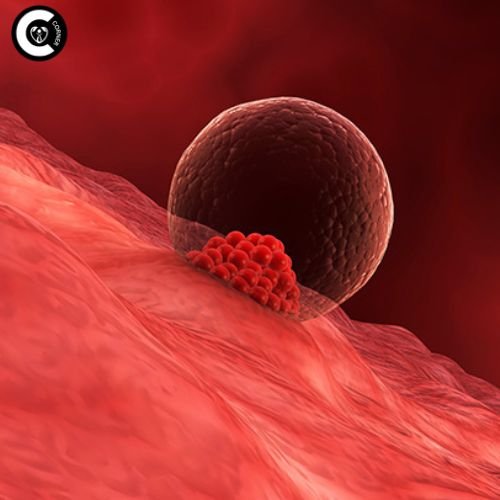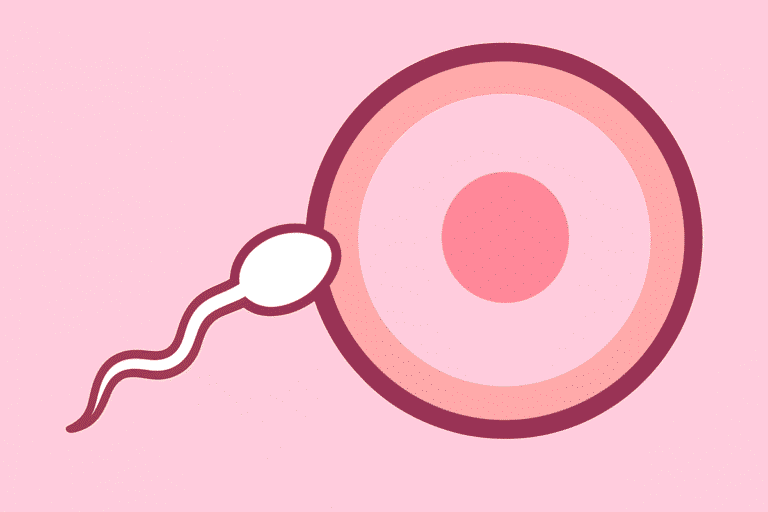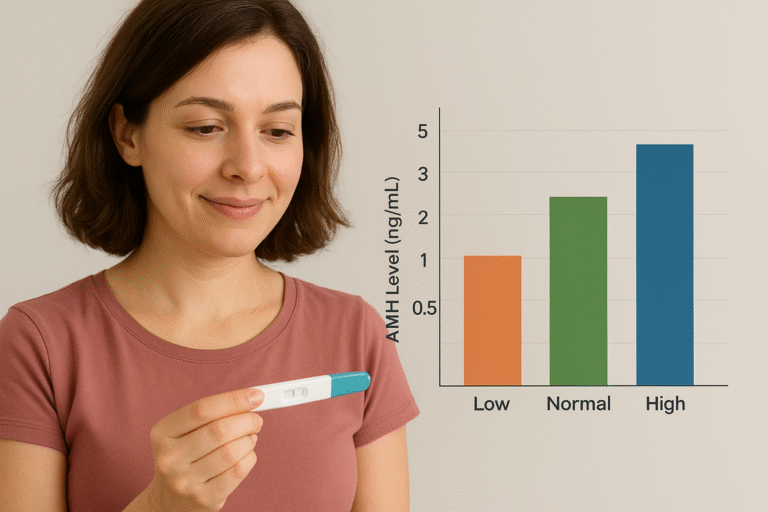For a lot of women, implantation bleeding is a strange but important early sign of pregnancy. This delicate indication of pregnancy happens when a fertilized egg attaches to the lining of the uterus. People sometimes mistake it for a light period. You can better recognize this important initial sign if you know when, how, and what implantation bleeding looks like and what other symptoms it may cause. We lay down all you need to know here, from the science behind it to useful methods for effectively spotting it.
What is implantation bleeding?
Implantation bleeding is a small quantity of light spotting or discharge that happens after a fertilized egg attaches itself to the thicker lining of the uterus (endometrium). This step, called implantation, is necessary for pregnancy to continue because it lets the embryo link with the mother’s blood supply. Not all women have implantation bleeding, but those who do usually notice it 1–2 weeks after getting pregnant. The bleeding happens when the embryo is digging into the endometrium, which breaks up small blood vessels. Implantation bleeding is usually short, mild, and changes colour from pale pink to rusty brown. This is different from menstruation bleeding.
When Does Implantation Bleeding Occur?

It is very important to know when implantation bleeding happens in order to tell it apart from other kinds of bleeding. Implantation usually happens 6 to 12 days following conception, which is about the same time when a woman expects her next menstruation. In a normal 28-day menstrual cycle, for instance, implantation could happen between days 20 and 26. Many women think that implantation bleeding is an early or irregular period at first because the two events happen at the same time. Implantation bleeding, on the other hand, only lasts a few hours to three days and doesn’t follow the normal flow of a period. If you’re trying to get pregnant, keeping track of your cycle and the exact times you spot can help you understand what’s going on.
Implantation Bleeding vs. Menstrual Period: Key Differences
It can be hard to tell the difference between implantation bleeding and a menstrual cycle because they happen at the same time. But there are a few clear signs that can help you tell them apart:
Color and Consistency
Implantation bleeding is commonly pale pink, brown, or rust-colored since it is older blood that takes time to leave the uterus. The discharge doesn’t always happen all at once and can look like little streaks or drips. Menstrual blood, on the other hand, starts out bright red and gets darker over the course of a few days. It also flows steadily, which means you need sanitary items.
Flow and Duration
Bleeding during implantation is very light, so light that many women only detect it when they wipe. It doesn’t get worse after three days and doesn’t last longer than that. Periods, on the other hand, start out weak but get stronger over time. They last 3–7 days and have a detectable flow that includes clots or tissue
Associated Symptoms
Both implantation and menstruation can cause cramps, however, implantation pains are less severe and last for a shorter time. When you get your period, you may have worse cramps, bloating, back discomfort, and mood swings. Breast tenderness, nausea, or tiredness are common early signs of pregnancy that might happen after implantation bleeding, but usually don’t happen at the same time as a period.
Also Read: Effect Of Hyperprolactinemia On Fertility
Symptoms of Implantation Bleeding
It generally comes with small changes in the body. Some of the most common symptoms are:
Light Spotting: A few drops of blood or a light discharge that doesn’t soak through a pantyliner.
Mild cramping: dull, short-lived pains in the lower abdomen that are not as bad as menstruation cramps.
Breast tenderness: swelling or sensitivity caused by higher levels of progesterone.
Basal Body Temperature (BBT) Shift: A continuous rise in Basal Body Temperature (BBT) following ovulation can mean that you are pregnant.
Fatigue or Mood Swings: Hormonal fluctuations can make you weary or cause mood swings.
It’s crucial to remember that some ladies don’t have any symptoms at all. If you are bleeding heavily, it is bright red, or you are in a lot of pain, see a doctor to be sure you don’t have an ectopic pregnancy or a miscarriage.
When to Take a Pregnancy Test After Implantation Bleeding
After implantation, the body starts making human chorionic gonadotropin (hCG), which is the hormone that pregnancy tests look for. But it takes time for hCG levels to get high enough to be seen.
Optimal Testing Window
The optimal time to test is three to four days following implantation bleeding or the day you expect your period. If you test too soon, you can get a false negative. Use a high-sensitivity early detection test or ask your doctor for a blood test, which detects hCG levels more accurately, to get the most accurate findings. If your test is negative but your period doesn’t come, wait 48 hours and test again or talk to a doctor
Key Takeaways: Identifying Implantation Bleeding
Implantation bleeding is a short but important early indication of pregnancy. To know what it is, you need to know when implantation bleeding happens (6–12 days after conception) and what makes it different: it has a light flow, lasts a short time, and doesn’t clot. Use this information along with cycle tracking and symptom monitoring to tell it apart from a period. If you think you might be pregnant, take a test after your period is late and then see a doctor for confirmation and advice on how to have a healthy pregnancy.
Pro Tip: Use ovulation prediction kits or fertility apps to find out exactly when you’re fertile and when implantation will happen. It gets easier to understand what your body is trying to tell you the more data you collect.





[…] Also read: Implantation Bleeding 101: Symptoms, Timing & How to Tell […]
[…] Also read: Learn about Implantation Bleeding […]